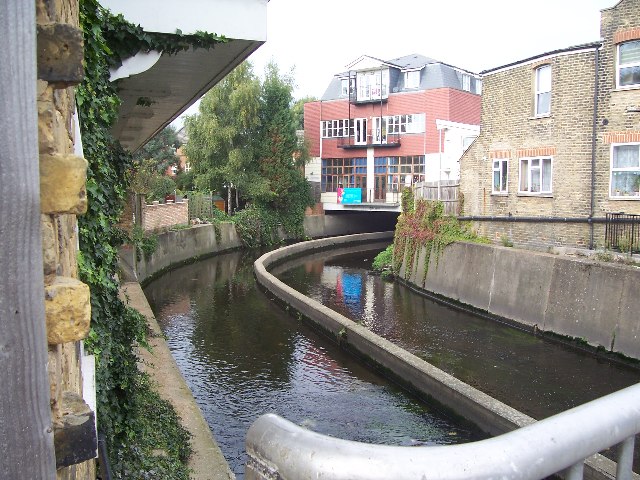Acid Rain's Legacy - Planet Earth Online
Interview with
Global warming may dominate today's environmental headlines but not so long ago it was acid rain. Caused primarily by emissions of sulphur dioxide and nitrogen oxides from power stations and factories, these oxides form acids that acidify soil, damage plants and end up in our river systems.
Acid rain emerged after the growth of industry and although the problem peaked in the late 1970s and early 1980s and has largely gone away - at least in Western Europe - its legacy lives on.
Planet Earth podcast presenter Richard Hollingham talked to Steve Ormerod, Professor of Ecology at Cardiff University about the issue and began by asking him about the long-term effects of acid rain...
Steve - About half of the length of rivers in upland Wales, that's about 12,000 kilometres overall have been affected by the problem of acid rain. What we've been trying to understand, essentially, is the recovery processes that have occurred in our river system particularly with respect to effects on organisms that live in the river, insects, fish and then consequences also for things like river birds.
Richard - And how have they recovered or haven't they?
 Steve - As you would expect as emissions of acidifying substances have gone down so the river pHs have slowly come up, something like about 0.2 to 0.3 units every decade, but what intriguingly we're seeing is that there is a mismatch in the speed of recovery in chemical terms and that's actually shown by the organisms that live in rivers and what we think is that the ecological and biological recovery is lagging behind what you would expect from the changing chemistry.
Steve - As you would expect as emissions of acidifying substances have gone down so the river pHs have slowly come up, something like about 0.2 to 0.3 units every decade, but what intriguingly we're seeing is that there is a mismatch in the speed of recovery in chemical terms and that's actually shown by the organisms that live in rivers and what we think is that the ecological and biological recovery is lagging behind what you would expect from the changing chemistry.
Richard - So the river water is fine and it should support much more life than it does.
Steve - The river water, in fact, is fine on average but what we think is the reason why organisms are not recovering quite so rapidly is that during wet conditions, stormy conditions, exactly the type that we've had this summer, there is a re-acidification, so short duration episodes of acidity that wipe out acid sensitive organisms and we think that is what is preventing this longer term recovery.
Richard - Where is this acid coming from and why are you getting these short burst of acidity?
Steve - Even just adding lots of water to our catchments by way of rainfall is enough to dilute all the calcium and magnesium that would normally buffer acidification and also because of that 150 years of the stored effects of acid deposition, of acid rain, we've very substantially depleted what buffering there might want to be in our soils.
Richard - How does this compare to ocean acidification?
Steve - So these really are two extremely different but quite interesting processes, so in the case of river acidification it is sulphur and nitrogen oxides that are responsible for the acidifying substances. In the case of marine systems essentially a pH reduction is being caused by huge volumes of carbon dioxide that are dissolving in seawater and actually driving the pH down. What's astonishing is how different the pH reduction is. So in the case of marine acidification we're talking about 0.2 or 0.3 of a pH unit. In rivers acidification that we saw because of acid rain was something of the order of 1.5 pH units, so dramatically different.
Richard - Well the reason that the oceans are becoming more acidic is because of increased carbon dioxide in the atmosphere and I'm also with Matthew Dray, and you're looking at what the increased effects of carbon dioxide in the atmosphere might have on fresh water...
Matthew - That's right - so my work involves looking at how elevated atmospheric carbon dioxide affects tree leaf litter chemistry and then how that leaf litter then decomposes in fresh water ecosystems. So what we're looking at here is that increased carbon dioxide affects leaf litter by changing the composition of its carbon/nitrogen ratio and when the carbon/nitrogen ratio decreases we see effects on the river system.
Richard - So the chemistry of leaves is changing?
Matthew - That's right, that's right. So basically we end up with carbon levels staying the same but nitrogen levels dropping relative to that carbon. Now what happens alongside that is that we can get other changes - that includes increases in defensive chemicals which generally are quite unpalatable to organisms that might feed on that material. We can also see increases in things like lignin and cellulose which are basically the structural components of those leaves. So, therefore, carbon dioxide makes those leaves tougher and more difficult to breakdown.
Richard - So why does this matter for the river?
Matthew - Rivers and woodlands are very dependent on input of leaf litter - that's the main source of organic nutrients. When that changes, when the amount of carbon changes you then find that the general chemical composition of that river will change at that point and further beyond that point downstream.









Comments
Add a comment